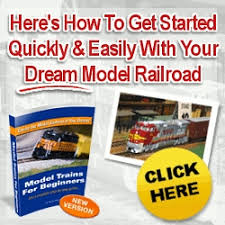fimmtudagur, 1. maí 2014
Browse »
home »
White Space and the Model Railroader

?

White Space and the Model Railroader
?
Negative or �White Space� is a concept familiar to graphic designers and fine artists. I think it�s a concept that more model railroaders should grasp.
As I continue building, and rebuilding, my layout I�m finding that less is usually more. The whole idea of not cramming every available square inch with track, structures, and the like is foreign to many modelers. But as I do the final planning or get the initial scenery completed on an �open country� scene I�m finding the less I include the more impactful the finished scene will be.
Two New England modelers, Mike Confalone (Allagash) and Jim DuFour (B&M Cheshire Branch) are prime examples of how state-of-the-art New England modelers are approaching modeling our favorite region and railroads in 2014.
As I continue building, and rebuilding, my layout I�m finding that less is usually more. The whole idea of not cramming every available square inch with track, structures, and the like is foreign to many modelers. But as I do the final planning or get the initial scenery completed on an �open country� scene I�m finding the less I include the more impactful the finished scene will be.
Two New England modelers, Mike Confalone (Allagash) and Jim DuFour (B&M Cheshire Branch) are prime examples of how state-of-the-art New England modelers are approaching modeling our favorite region and railroads in 2014.
 |
Another, perhaps less well known example is Randy Laframboise�s Rutland. Randy, along with his friend Mike Sparks are, it�s safe to say, experts on modeling not only the Rutland but Vermont.
If model railroading can be an art form (and I think it can be) then we need to approach it like an artist. And one thing an artist must have is a respect for his or her subject. Some, or perhaps a lot of this, is about modeling �home.� Mike, Jim, Randy, and I all either lived in, or live in New England. And there�s some things that are very special to each of us about that region, it's history, and railroads that compel us to recreate it in miniature.
This isn�t fantasy modeling. By that I mean you won�t find dozens of overly compressed structures, most sporting an assortment of unusual (and often implausible) architectural elements scattered throughout the countryside.
But it�s not �rivet counting� either.
The buildings are, as a rule straightforward, purposeful, and close to scale size. The familiarity and respect for the subject matter extends beyond the trains to the buildings, fields, farms, trees, fencelines, and a host of other details.
Make no mistake about it. The trains and structures are, by their very nature, the stars of the show. But they are incorporated into the scene with breathing room around them.
You focus on one building in its natural habitat, and, as your eye scans the landscape some �negative space� - a stand of trees, or a field, or even a country lane � gives the eyes, and brain, some respite before you focus on the next �star.� All the while through this agrarian landscape you might catch a glimpse of a train.
Randy was kind enough to allow me to share a couple of photos to illustrate this post. These photos show the Florence, Vt., section of his layout. He estimates the distance between the street on the left and creamery building on the right is about five feet. When was the last time you saw a layout that had that much �negative� space? It is accurate to the prototype, as he measured the distance.
If model railroading can be an art form (and I think it can be) then we need to approach it like an artist. And one thing an artist must have is a respect for his or her subject. Some, or perhaps a lot of this, is about modeling �home.� Mike, Jim, Randy, and I all either lived in, or live in New England. And there�s some things that are very special to each of us about that region, it's history, and railroads that compel us to recreate it in miniature.
This isn�t fantasy modeling. By that I mean you won�t find dozens of overly compressed structures, most sporting an assortment of unusual (and often implausible) architectural elements scattered throughout the countryside.
But it�s not �rivet counting� either.
The buildings are, as a rule straightforward, purposeful, and close to scale size. The familiarity and respect for the subject matter extends beyond the trains to the buildings, fields, farms, trees, fencelines, and a host of other details.
Make no mistake about it. The trains and structures are, by their very nature, the stars of the show. But they are incorporated into the scene with breathing room around them.
You focus on one building in its natural habitat, and, as your eye scans the landscape some �negative space� - a stand of trees, or a field, or even a country lane � gives the eyes, and brain, some respite before you focus on the next �star.� All the while through this agrarian landscape you might catch a glimpse of a train.
Randy was kind enough to allow me to share a couple of photos to illustrate this post. These photos show the Florence, Vt., section of his layout. He estimates the distance between the street on the left and creamery building on the right is about five feet. When was the last time you saw a layout that had that much �negative� space? It is accurate to the prototype, as he measured the distance.
Gerast áskrifandi að:
Birta ummæli (Atom)

Engin ummæli:
Skrifa ummæli